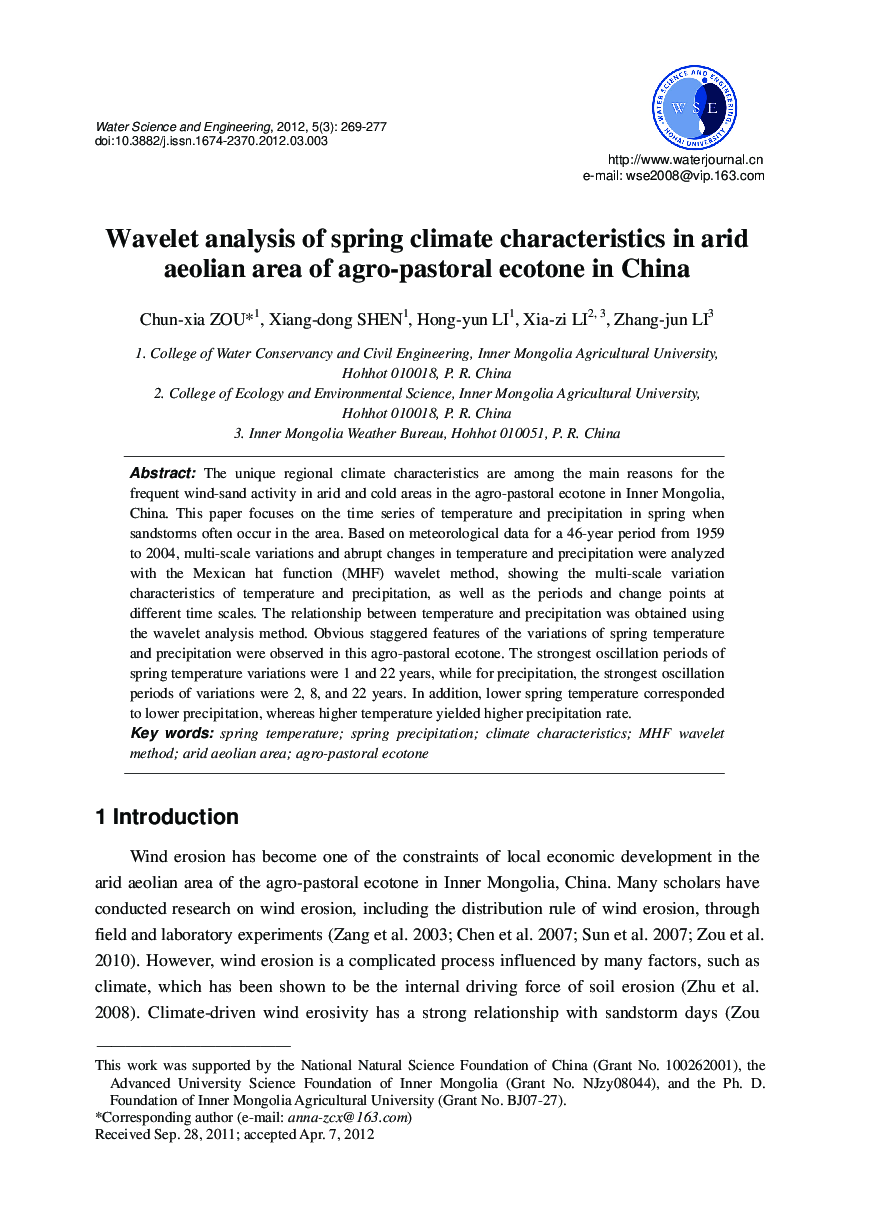| Article ID | Journal | Published Year | Pages | File Type |
|---|---|---|---|---|
| 313118 | Water Science and Engineering | 2012 | 9 Pages |
The unique regional climate characteristics are among the main reasons for the frequent wind-sand activity in arid and cold areas in the agro-pastoral ecotone in Inner Mongolia, China. This paper focuses on the time series of temperature and precipitation in spring when sandstorms often occur in the area. Based on meteorological data for a 46-year period from 1959 to 2004, multi-scale variations and abrupt changes in temperature and precipitation were analyzed with the Mexican hat function (MHF) wavelet method, showing the multi-scale variation characteristics of temperature and precipitation, as well as the periods and change points at different time scales. The relationship between temperature and precipitation was obtained using the wavelet analysis method. Obvious staggered features of the variations of spring temperature and precipitation were observed in this agro-pastoral ecotone. The strongest oscillation periods of spring temperature variations were 1 and 22 years, while for precipitation, the strongest oscillation periods of variations were 2, 8, and 22 years. In addition, lower spring temperature corresponded to lower precipitation, whereas higher temperature yielded higher precipitation rate.
